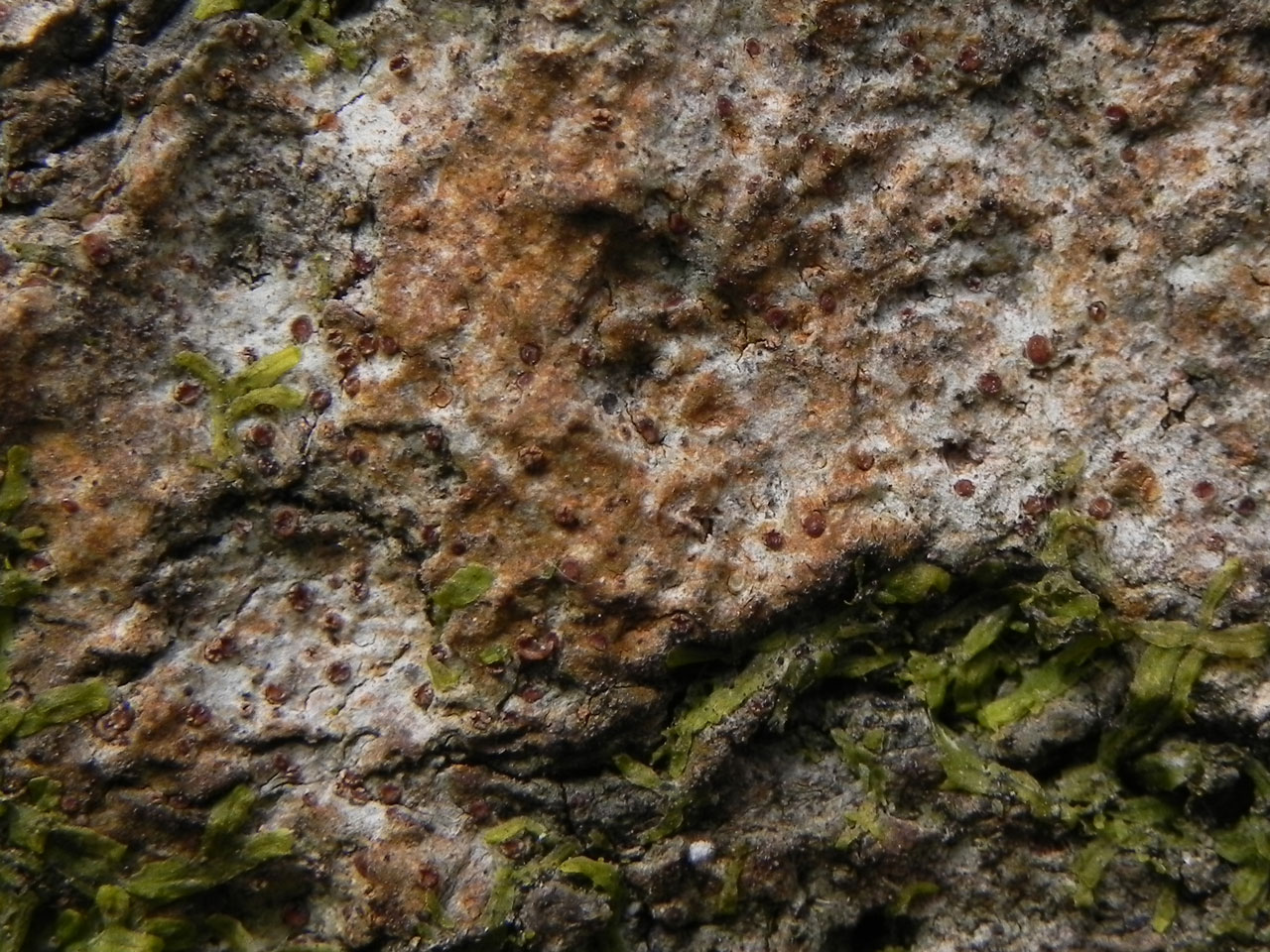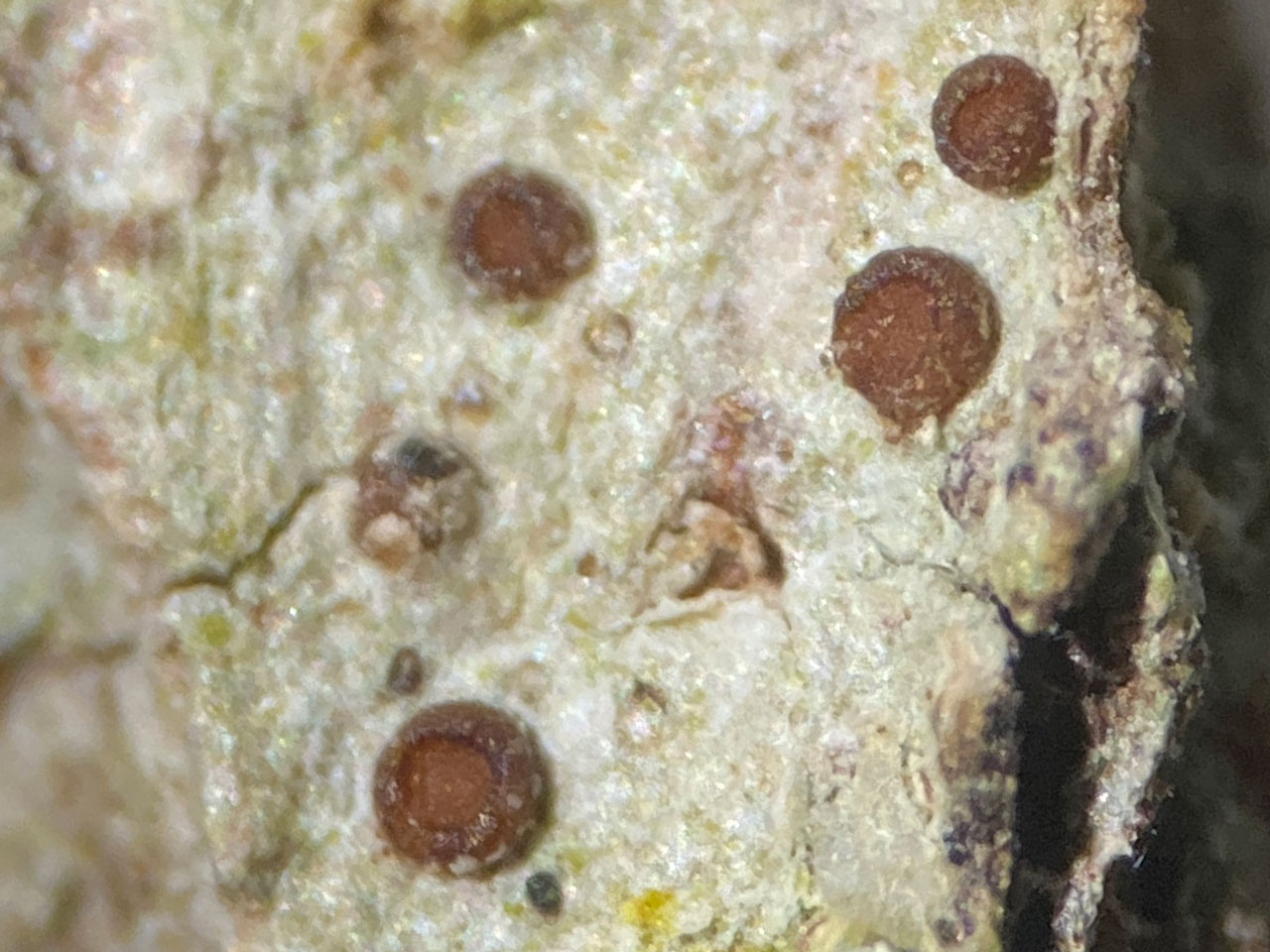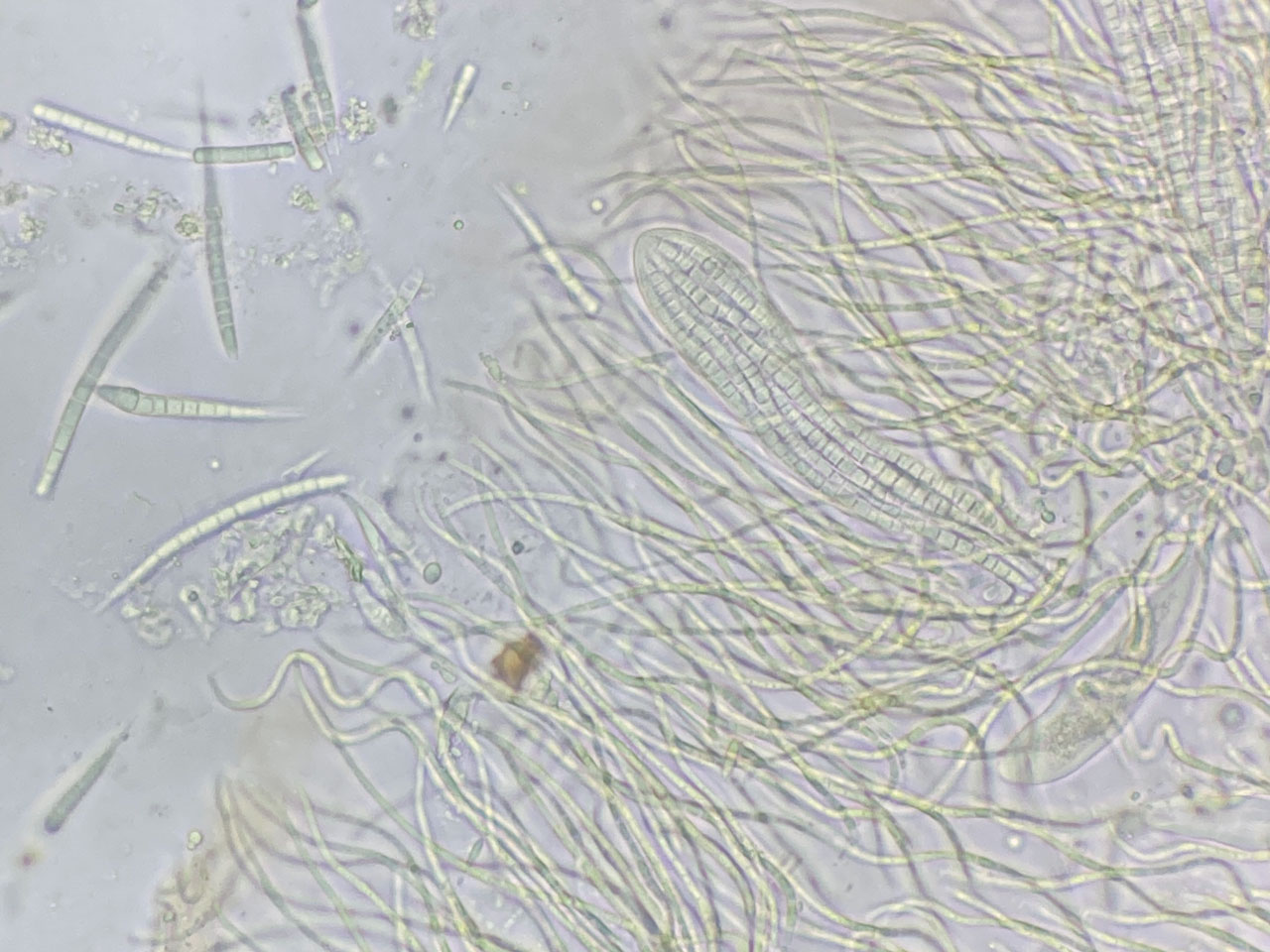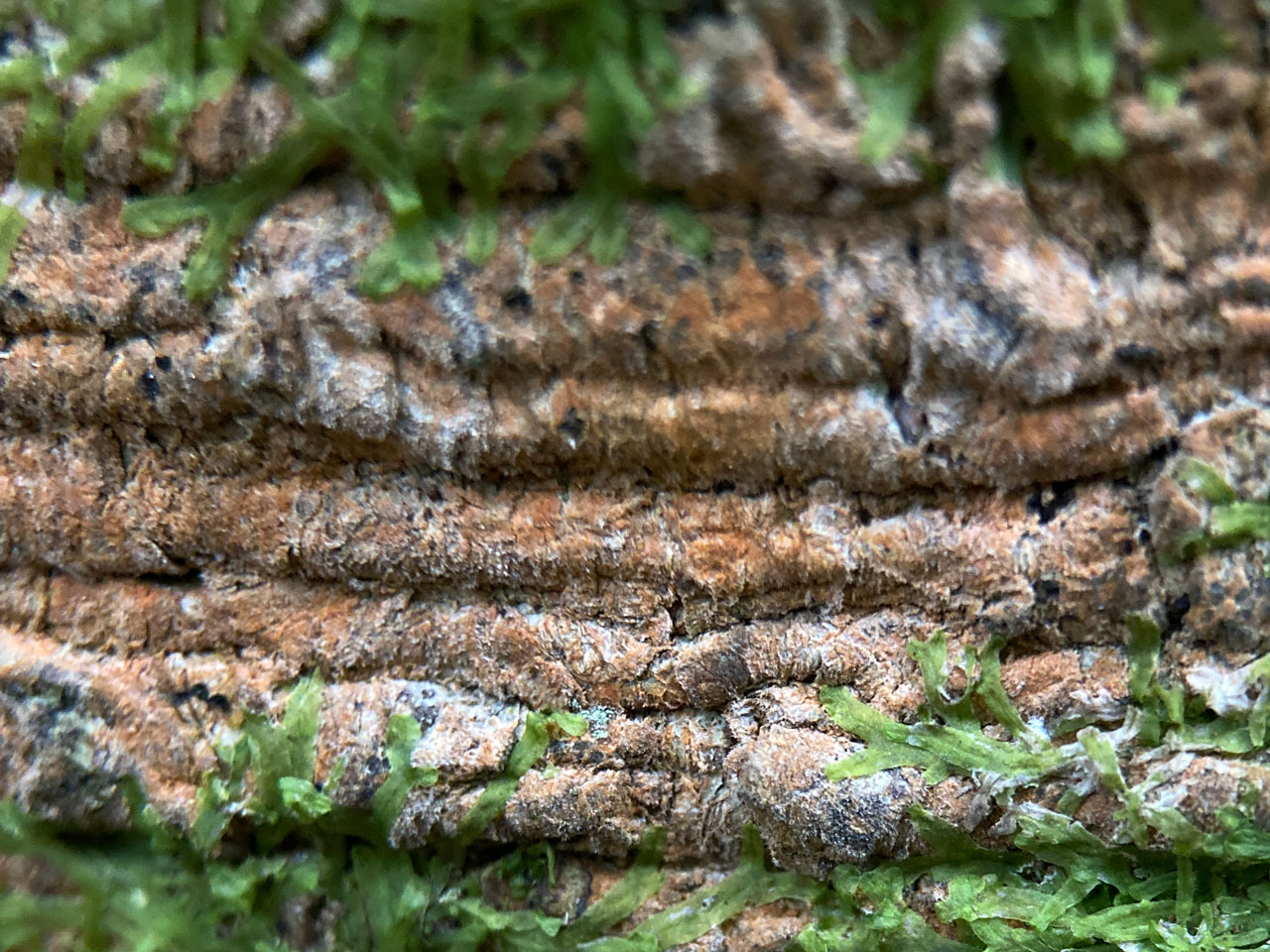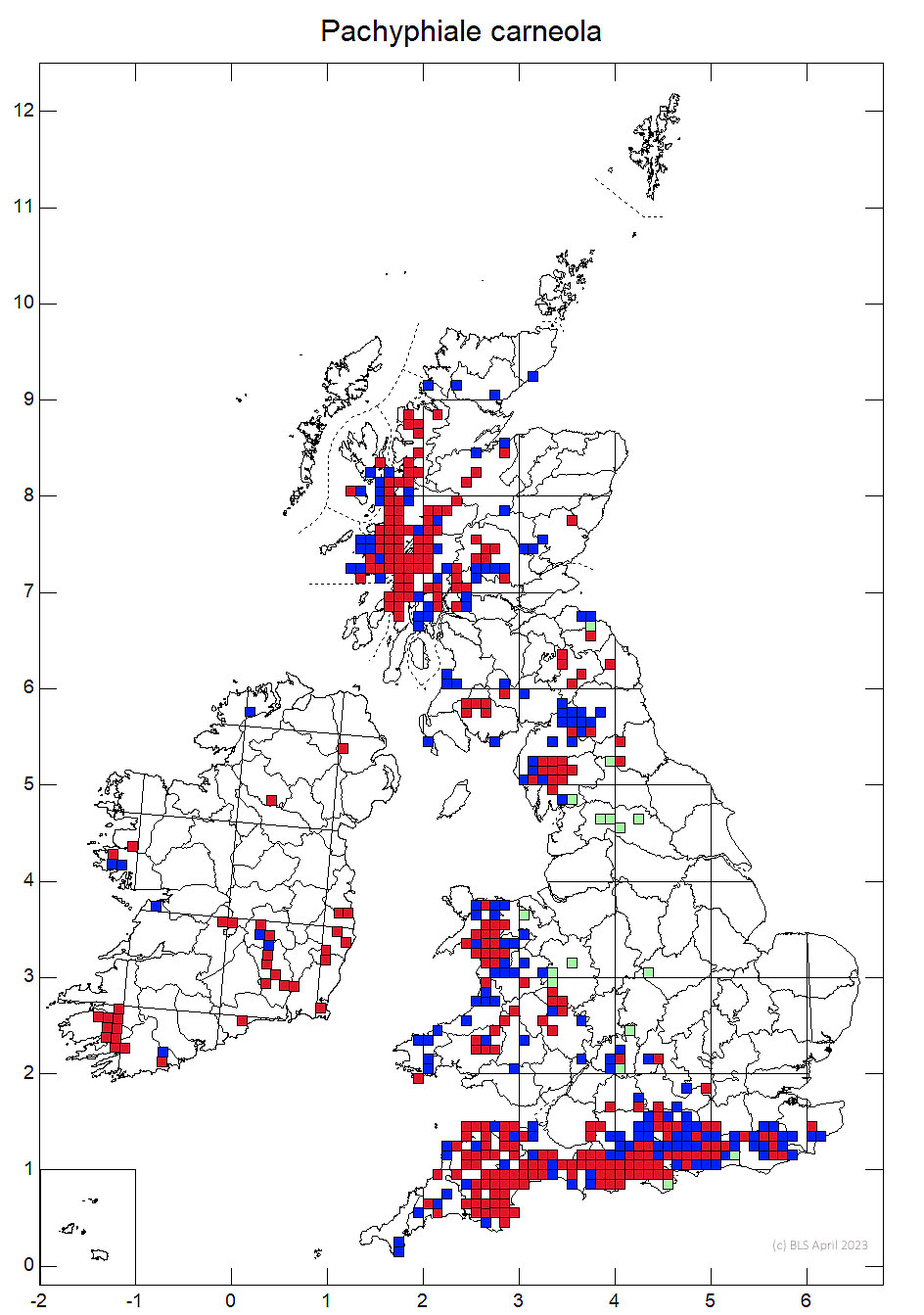A small but distinctive ancient woodland lichen, nicknamed Raspberry Winegums by Francis Rose from the small concave red- or orange-brown apothecia. These are set on a white thallus and found on base rich bark on older trees. In the south this is one of the earlier old woodland species colonising into older young growth stands dating from 19th C, but is less mobile towards the edges of its range. Two very rare look a likes are found in sub-oceanic woods (Pachyphiale fagicola) or upland woods (Pachyphiale ophiospora) but need microscopic examination to separate.
Thallus crustose, superficial, whitish-grey or green-grey, thin, effuse. Apothecia numerous, scattered, rarely contiguous, gelatinous and ± translucent when wet, concave, red- or orange-brown; true exciple dark brown; at first sunk in the thallus, then erumpent with a spurious, crenulate, pale thalline margin, sometimes persistent. Asci (8-) 16- to 48-spored, 75–100 µm long. Ascospores 38–80 (–85) × 3–5 (–6) µm, acicular, straight or somewhat curved or flexuose, with sharp-pointed ends, 9- to 15-septate. Pycnidia rare.
Can be mistaken for Gyalecta truncigena with less concave than typical apothecia, but this has shorter and broader muriform spores and does not have a white thallus. Thelopsis rubella, which grows in similar habitats, has perithecia of similar width and colour, the apical pores of which are normally easily seen when wet (×10) and can resemble the widening apothecial discs of Gyalecta carneola. In sub-oceanic woods or upland woods Pachyphiale fagicola or Pachyphiale ophiospora, should be suspected; these tend to have have darker brown or orange-brown apothecia, but require the spores to be checked to be identified.
Sometimes parasitised by the hyphomycetous fungus Gyalectiphila pluriseptata. Heavy infections turn the normally smooth white thallus orange and scruffy from exposed Trentepohlia algae.
On bark of mature to old broad-leaved trees, mostly in older woodlands or parklands, but colonising into younger stands as they mature, mainly on sheltered, moderately well-lit base-rich flushed bark in open patches between mosses, also on smooth bark on Corylus in the west; an ancient woodland indicator; locally frequent.

From Kent & Cornwall northwards to Ross & Nairn, absent or very rare in N.E. & C. England, E. Anglia, rare in Ireland.
Cannon, P., Coppins, B., Aptroot, A., Sanderson, A. & Simkin, J. (2024). Ostropales genera I, including Absconditella, Belonia, Clathroporinopsis, Corticifraga, Cryptodiscus, Cryptolechia, Francisrosea, Gomphillus, Gyalecta, Gyalidea, Gyalideopsis, Jamesiella, Karstenia, Nanostictis, Neopetractis, Pachyphiale, Petractis, Phialopsis, Phlyctis, Ramonia, Sagiolechia, Secoliga, Sphaeropezia, Spirographa, Stictis, Thelopsis, Thrombium and Xerotrema. Revisions of British and Irish Lichens 38: 1–60.
Text by Neil A Sanderson based on Cannon et al (2024)
